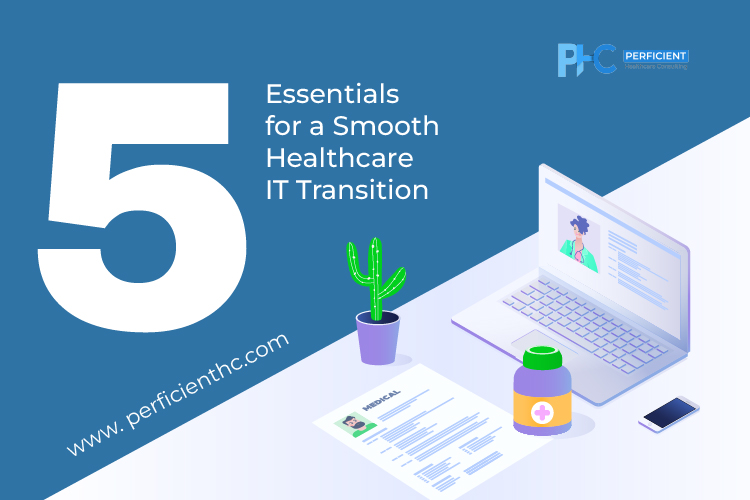Introduction
Healthcare technology is evolving rapidly and with it, the pressure to upgrade outdated systems. Whether implementing a new EHR platform, launching digital front doors, or modernizing backend infrastructure, transitioning IT systems in healthcare can be complex.
Done right, it leads to better patient care, streamlined workflows, and long-term savings. Done poorly, it can cause disruption, data issues, and frustrated users. So, what sets a successful transition apart?
Here are five key considerations every healthcare organization should keep in mind when planning an IT transformation.
1. Set Clear Objectives and Success Criteria
Every IT transition should begin with a clear answer to one question: Why are we making this change?
Defining success upfront ensures alignment across leadership, clinical teams, and technical staff. Are you aiming to improve efficiency? Reduce costs? Strengthen compliance? The goals you set will shape every decision that follows.
Pro Tip: Establish measurable KPIs to track progress and stay accountable.
2. Prioritize Data Integrity and Compliance
In healthcare, data is everything. From patient records to billing information, ensuring a clean, complete, and compliant data migration is critical.
Key Steps:
- Conduct a thorough data audit
- Address duplicate or incomplete entries
- Validate migration accuracy
- Ensure HIPAA and security compliance
Without data integrity, even the best system will fail to deliver value.
3. Engage Stakeholders Across Departments
An IT transition impacts everyone, not just the tech team. Clinicians, administrators, and even patients interact with digital systems daily. Including their input early helps ensure your new solution actually fits their workflows.
Why it matters:
- Reduces resistance to change
- Improves adoption rates
- Surfaces real pain points you can fix early
IT strategy succeeds when it supports real-world users.
4. Ensure Interoperability and Integration
Modern healthcare is a connected ecosystem. Your new system must communicate seamlessly with existing platforms, whether it’s your EHR, lab systems, billing software, or third-party apps.
Checklist:
- Test data flows between platforms
- Use standardized APIs and protocols
- Address compatibility issues in advance
A disconnected system is a step backward. Integration is key to long-term success.
5. Prepare for Change Management and Support
Even the best system can fall flat without the right rollout. Training, support, and a thoughtful change management plan make all the difference.
Consider:
- Staff training programs
- Pilot launches or phased rollouts
- Dedicated support teams post-go-live
- Feedback loops to catch issues early
Support doesn’t stop at launch. Long-term value depends on how well the transition is managed.
Conclusion
A successful healthcare IT transition isn’t just about technology, it’s about strategy, people, and preparation.By setting clear goals, protecting your data, involving your teams, ensuring integration, and supporting change, your organization can avoid costly pitfalls and unlock the full potential of modern healthcare technology.
Transition confidently. Deliver better care.
Planning a healthcare IT transition?
Perficient Healthcare helps providers modernize with confidence, bringing strategy, security, and end-to-end support to every project. From data migration to post-launch optimization, we’re here to guide your digital shift every step of the way.
Let’s build smarter, stronger healthcare systems, together. Visit perficienthc.com to learn more.
Frequently Asked Questions
A healthcare IT transition refers to upgrading, replacing, or migrating systems like EHRs, billing platforms, or digital tools to improve care, efficiency, or compliance.
Engaging clinical and operational teams early helps ensure the new systems meet their real-world needs, which boosts adoption and reduces disruption.
Start with a data audit, clean up legacy data, test transfers carefully, and make sure all handling meets HIPAA and security standards.
Common risks include data loss, system downtime, low user adoption, integration issues, and failure to meet regulatory requirements, most of which can be prevented with proper planning.
Successful transitions include strong post-launch support like training, IT help desks, user feedback loops, and system tuning to ensure long-term success.

